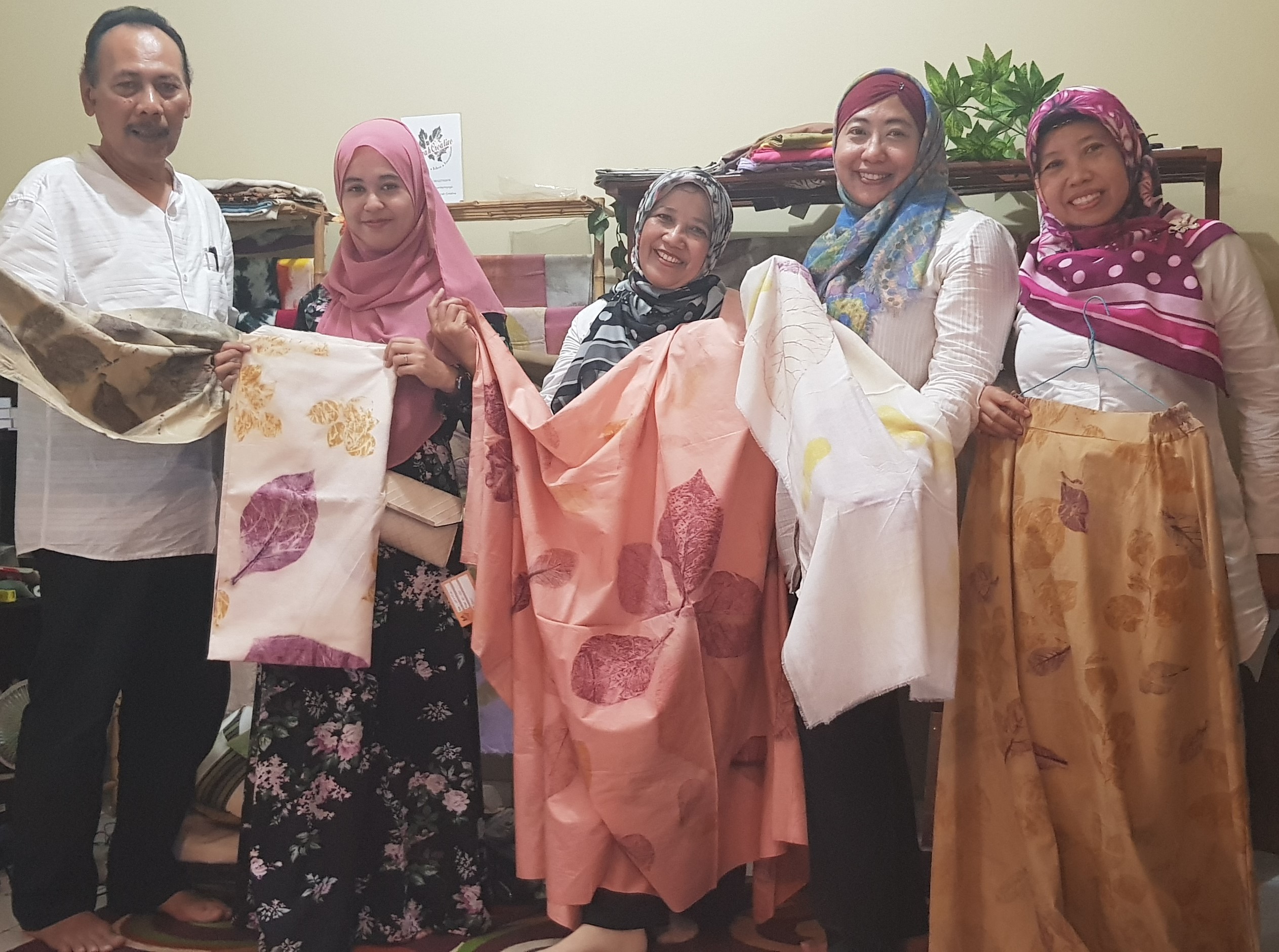SLEMAN - Now there are new techniques for making motifs on fabric besides making batik, namely ecoprint. Ecoprint is a technique to give a pattern to a fabric using natural materials, namely leaves or flowers.
In Yogyakarta, ecoprint crafters have begun to emerge; one of them is Retno Winarti. The alumi of Faculty of Economics and Business UPN "Veterans" Yogyakarta has been in the business for the past three years. In the beginning, she was a craftsman of shibori cloth, a fabric with unique Japanese folding and dyeing techniques.
After attending the training, she decided to pursue ecoprint. Thanks to her diligence, her business has now become one of the MSME members in the province and has actively participated in several exhibitions.
"Ecoprint fabric is currently well-known. Quite a lot of enthusiasts", said Retno.
There are several techniques that Retno uses to produce ecoprint motifs. Among these are pounding (hitting) and steaming (steamed). For pounding, the leaves that have been collected are then beaten on white sheets of cloth. The leaves will later emit a natural color. Make a pounding until the colors printed on the fabric are clear enough. Even the leaf bones appear.
The cloth that has been beaten is left for a while, then it goes on to the next process, the steaming technique some nights. The goal is to make the color of the leaf dried and attached to the fabric. After that, the cloth is rinsed, or according to Indah, the term is called fixation.
The steaming process is steaming cloth in a pan. The cloth is folded or rolled up neatly. It is done for several hours. After steaming, the cloth is then soaked in alum or tunjungan water (fixation). The fixation process is by rinsing the cloth, either with vinegar water, alum water, lime water, tunjung water. The goal is that the color of the leaves does not fade when it is washed.
"Usually I use alum water or tunjung. The alum water is for a rather bright color. The tunjung water is for the color that is rather dark", said the mother of two children.
The results given from the ecoprint process are very interesting. It is because the colors and motifs produced on each fabric are different so that the ecoprint fabric is unique and exclusive. In addition, the product is environmentally friendly because the ingredients are from nature.
This is what underlies the institutional research activities of two lecturers of Faculty of Economics UPNVY, Dr. Noto Pamungkas and Dr. Sri Suryaningrum.
In a research proposal entitled "Peningkatan Pengembangan dan Pelatihan Wirausaha untuk Alumni Fakultas Ekonomi dan Bisnis Berbasis Batik Ecoprint (Increasing Entrepreneurship Development and Training for Alumni of the Faculty of Economics and Business-Based Batik Ecoprint)", they invite people to increase the productivity of ecoprint crafts.
"We want to optimize the efforts of the alumni to continue developing it. Moreover, the productions are very interesting and have good prospect", said Noto Pamungkas explained.
With the provisioning and business assistance, said Noto, MSME businesses are expected to penetrate the international market. (wwj / PR)
ecoprint.jpg
Jl. SWK 104 (Lingkar Utara), Condongcatur, Yogyakarta 55283 (Kampus Pusat)
Jl. Babarsari 2 Yogyakarta 55281(Kampus Unit II) | Telp. +62 274 486733



